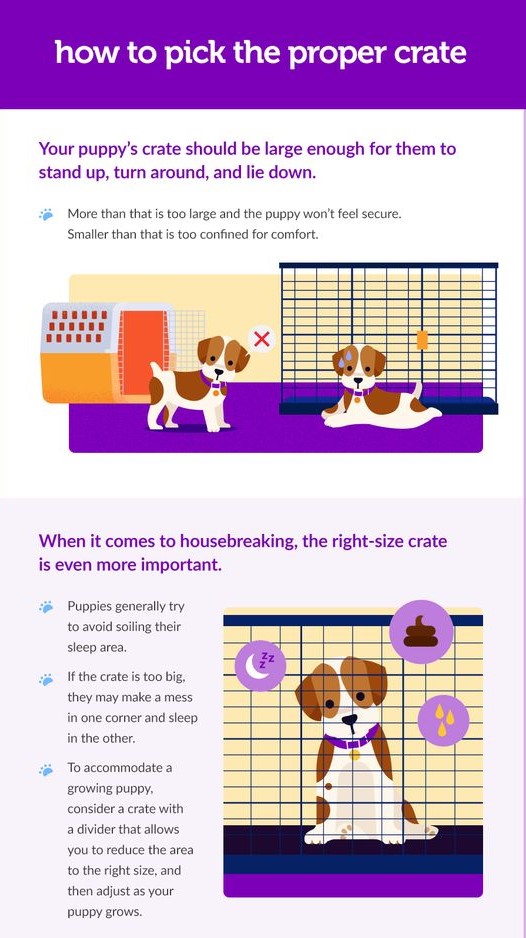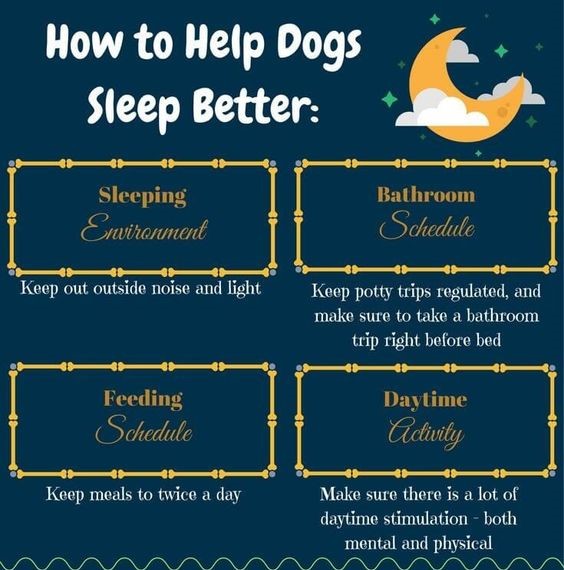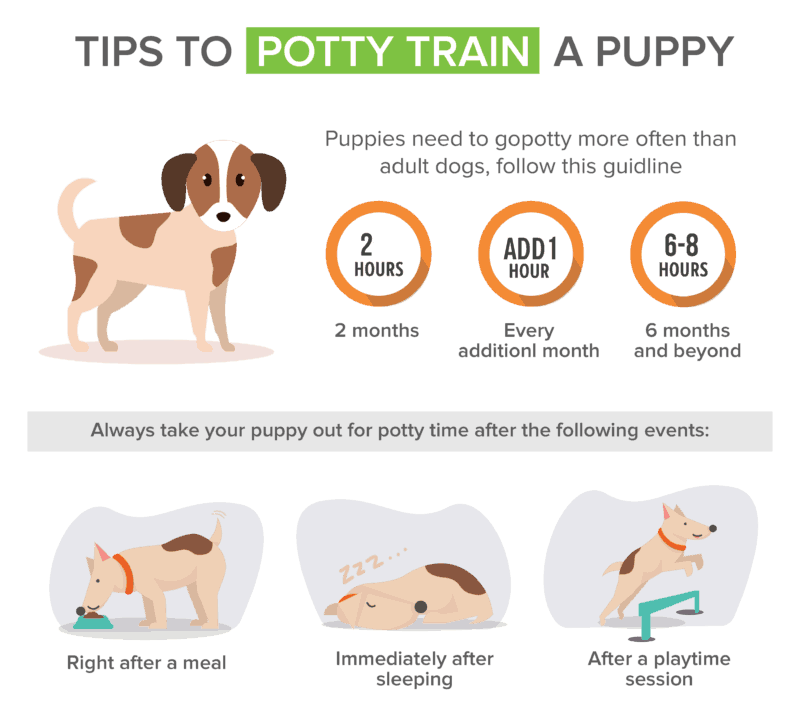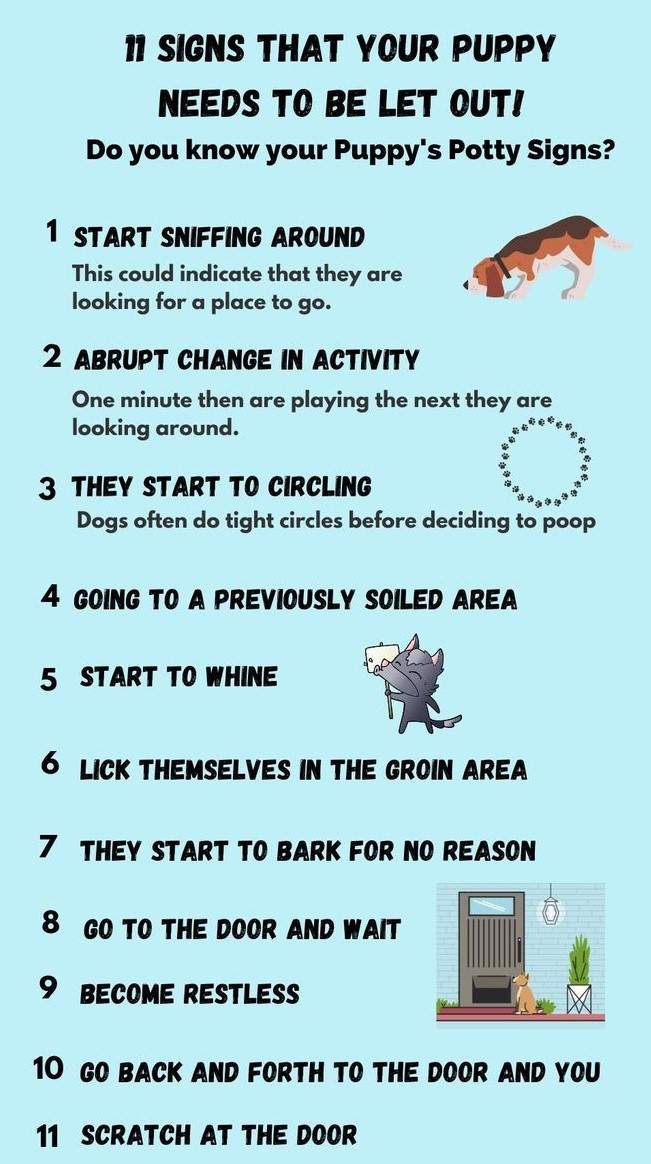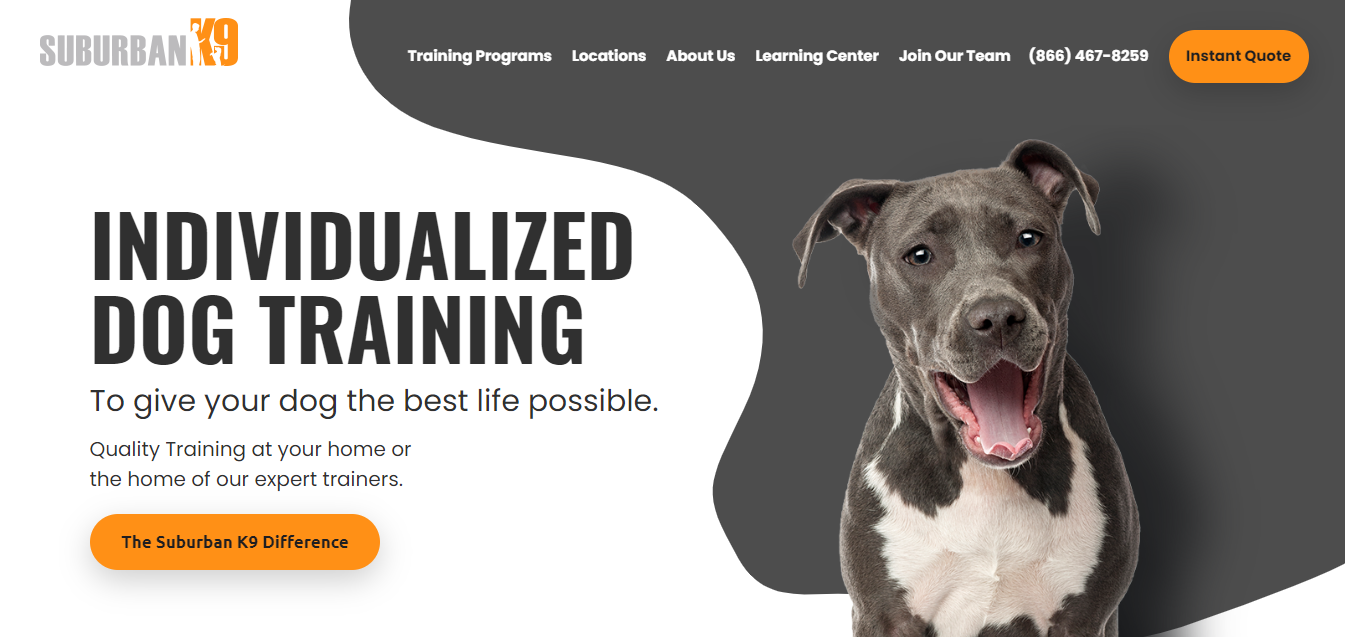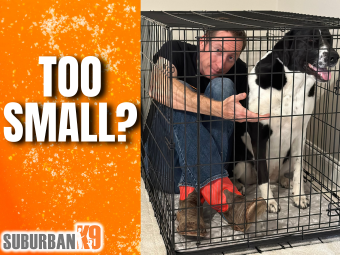It's the witching hour and your adorable pup has transformed into a stealthy potty ninja. To add to the horror, it navigates through your living room as if it were an obstacle course. Sleepless nights because of piddling accidents can drain all the fun of having a dog. This whole thing is as intimidating as it can get for you to plunge into potty training a puppy at night.
You are petrified. We understand. But things can't go on functioning like this. To devise a solution for you, we have compiled a list of proven strategies for decoding the secret language of puppy bladder signals that even the military would envy. The best part about the article is that our legit nighttime potty training regime won't give you burnout. If you want to learn more about potty training, try our Suburban K9 Potty Training Academy!
In the next 8 minutes, you will be armed with the right knowledge, tools, and confidence to take that potty ninja down and turn it into the most well-behaved doggo giving you nothing but slobbery kisses, cuddles, and peaceful snoozes.
8 Proven Strategies For Potty Training A Puppy At Night
Nighttime potty training comes with loads of challenges. We don't mean to scare you but this part of potty training is a tad bit tougher than the daytime potty training because this means sacrificing your sleep for a few days.
1. Crate Training Puppies For BedTime Success
A dog crate may sound cruel to some dog parents, especially the ones who are new to this but a crate is the most effective form of housebreaking a pup. Nighttime crate training helps puppies develop bladder control. Not only is it good for puppy potty training but it is also crucial for a new puppy’s well-being.
One thing is decided, you can’t do nighttime potty training without the aid of a crate. A small cozy nook makes them feel secure and the silver lining here is they don't soil their place of sleeping.
Before you begin crate training, choose a size where your pup can stand, turn, and lie down comfortably. Not bigger than that. Otherwise, it will start soiling the crate as well. An appropriate-sized crate can make or break the situation.
To crate train your dog and make them comfortable with it, start by placing it in a central location where your family spends time together, like your bedroom. Gradually move the crate to its final spot. Keep the crate door open and make it inviting with a blanket or rug.
If your dog is hesitant, use sweet talk or entice them with treats or toys. Create a positive association by feeding meals inside the crate. As your puppy spends more time in the crate, it will become more comfortable with it.
The confined space will discourage them from eliminating inside the crate and encourage them to hold it until you let them out in between or in the morning. Remember, the maximum you can keep your pup confined in a crate at night time is 6 to 8 hours.
If You Need a Crate, Here are Some Options;

- FARMHOUSE FURNITURE STYLE Featuring barn doors, farmhouse and bracket decor, the dog crate furniture is both modern and casual feel.
- WATER RESISTANT Baseboards are designed to be water resistant and anti-soak.
- REMOVABLE DIVIDER The removable divider design makes the dog cage more creative.
- sturdy and comfy dog crate creates a cozy space for the dog and brings it a sense of security.

- Sturdy Plastic Dog Crate: Securely and safely protect your pet and your home with this dog crate
- Suitable for Dogs of All Sizes: 5 different sizes to choose from
- Airline Friendly Dog Carrier: This pet carrier meets most airline cargo specifications
- Easy to Keep Clean: Sturdy plastic shell on this dog carrier is easy to clean

- LARGER ROOM Suitable for dog breeds up to 90lbs.
- TWO SPACIOUS ROOMS Features a removable divider.
- STURDY DOG CRATE Thick metal fence is solid while providing visibility and ventilation.
- EXTRA LARGE STORAGE This furniture dog crate has a large tabletop, and four drawers
- Pre-assembled parts make installation easy and convenient
2. Set The No-Playtime-Before-Bed Rule
Setting boundaries is great for the puppies to learn how to “home”. Make sure that your puppy gets enough exercise throughout the day. Of course at the scheduled time. But set a strict no-playtime rule before sleeping.
Daytime activities are enough for the dog’s body to yearn for rest. Outdoor activity just before sleeping can make them excited – so excited that it becomes difficult for them to easily fall asleep. This happens because exercise releases happy hormones called endorphins and dopamine.
An excited pup is difficult to calm down and even impossible to lull to sleep, hence disrupting the puppy’s sleep schedule. Also, the more dogs exercise right before bedtime, the more water they tend to drink before sleeping. As a result, their bladders can become full, causing a need to relieve themselves during the night.
What you can do is establish a consistent puppy sleep schedule that includes a designated time for playtime earlier in the evening - not before sleeping. Also, minimize environmental stimuli of any kind that boosts excitement like loud noise, bright lights, or anything of that sort.
3. Teach Your Pup To Sleep Through The Night
Undisturbed night sleep is crucial when it comes to potty training a pup at night. For this, you should create an environment where your puppy feels cozy and safe. We suggest investing in a crate for this purpose. If you are not up for it, a comfortable doggie mattress and a blanket would do here.
Now this step is very important and should not be neglected. The sleeping area should be kept in a draft-free, noise-free, and distraction-free zone. Keep their bed in a dim to no lights area. This will ensure that the puppy doesn't wake up from any disturbance in the middle of the night.
If it’s the puppy’s first night in the crate, it may whine because of separation anxiety. Do not give in unless you know for sure it's their scheduled potty break.
4. Limiting Food & Water Intake
As we mentioned before, everything related to your puppy’s routine will have to be clocked. Only this will ensure your puppy is properly potty trained for both day and night time. Meal time for the puppies should be scheduled. Ideally speaking, the last meal should be at least 2 to 3 hours before sleeping. This gives them sufficient time to digest.
A gradual transition is required if you need to adjust the timing of your puppy's last meal. Keep shifting the feeding time by 15 minutes each day until you reach the desired schedule. This gradual transition will not upset their digestive system. Most importantly, do not overfeed your pup – always go by the food brand's recommendations or that of their veterinarian.
Similarly limit water intake 2 to 3 hours before bedtime. Give them ample time to empty their bladder before they sleep. This reduces the need to pee during the night. The important thing is to keep them hydrated throughout the day so limiting water at night will not harm their health.
5. Set Up A Schedule For The Last Potty Call
We cannot emphasize more on setting up a routine for everything your pup does. Who doesn't adore a disciplined doggo? We know we do for sure. So here, you need to establish a “last call for potty” time.
It should be just before putting your puppy to bed and turning off the lights. Give them patient 5 minutes to do their job outdoors. Once successful, it is time to say nighty night and close the crate door. What this does is calm your pup down before sleeping and also reduces any chance of a piddling accident until their bladder is full again.
Puppies are smart and keen learners. If you repeat the last potty call every night before sleeping, they will learn that this is their last chance to relieve themselves before they doze off.
When it comes to house training the puppies, many people may like the idea of using puppy pads but we personally do not believe in using them. Here's why: encouraging them to eliminate indoors can create confusion for the dog and hinders their progress towards the ultimate goal of going outside. By avoiding the use of potty pads altogether, you'll save yourself the extra effort and streamline the training process.
6. Observe & Adjust
During the initial months of potty training, expect that your puppy may need to go outside for nighttime potty breaks. While the ultimate goal is to let your puppy sleep through the night without needing to go out, young puppies have smaller bladders and limited bowel control.
Did You Know?
Puppies can typically hold their bladder for approximately the same number of hours as their age in months. So if your puppy is 2 months old, expect its bladder to get full every 2 hours.
What you can do is set up an alarm to take your pup out for potty in the middle of the night, especially during the first few weeks. Later, you can drag it to around 6 hours after their last potty break as most puppies can typically hold it through the night for that duration.
If there are two people sharing the responsibilities, try staggering your sleep schedule. One person can head to bed early while the other stays up a bit later. This way, both can take turns taking the puppy out every two hours and still manage to get a solid 6-7 hours of sleep.
This drill is to ensure that there are no accidents and that your pet stays accustomed to the routine of peeing in the designated spot. During the potty break, make sure your interaction is minimal. No eye contact or anything of that sort to make them excited.
Gradually start increasing this time by 15 minutes each night until you take it to a 7 to 8-hour gap. As your puppy grows older, the bladder control time will improve. You and your doggo will sleep peacefully throughout the night without needing to wake up in the middle of the night for a potty break.
7. Wake Them Up Early
Clock your pup’s sleep time and wake them up before their whining or scratching wakes you up. Do not waste time at this point. Their bladder is already full from the last break and they immediately need to relieve themselves. Take them out to potty at their designated spot.
Repeat this drill every day until their bladder sets the natural alarm to this time. Following this step religiously will reduce the chance of them soiling in their sleep area next to the nill.
8. Consistency & Patience
Consistency and patience are 2 key factors in potty training a pup that never go out of style. While we don't deny the fact that potty training at night can get frustrating for the best of us, persistence is the only way that can bring us out victorious.
If you are not persistent in your routine, you will be giving mixed signals to your pup, confusing it more. Consistency is not only required in the night routine but throughout the day because it is the daytime routine that shapes up the nightly routine for your pup.
When you establish a night potty routine for your pup, you need to stick to it as if your life depends on it. Put up alarms, reminders, or anything else to keep up with that routine. It may seem hard but will be fruitful in the long run.
Persistence and dedication resonate with the kind of patience you have for the job. If waking up in the middle of the night is difficult for you as you have commitments in the morning as a priority, then you can seek help from professional trainers.
Common Pitfalls: 5 Mistakes To Avoid During Nighttime Puppy Potty Training
While you follow the steps to nighttime potty training, you still can't seem to get the desired results. You are frustrated and wonder where you are losing it. Let us help you here by making you aware of some common mistakes dog owners unknowingly make while potty training their puppies at night. Read and learn.
1. Overfeeding
Chubby is not cute. This is a common issue that most dog owners don't understand. Overfeeding your pup has consequences – consequences that can affect the health of your pup in the long run. The first thing that it will adversely affect is the digestive system of your pup. When we speak of potty training a pup, a bad digestive system will never help achieve goals.
It increases the frequency of urgency of using the loo. If you are still overfeeding your pup, prepare yourself for more trips and longer elimination times. Proper feeding regulates bowel movements which resonate with a predictable bathroom schedule.
2. Ignoring Signs
We know that puppies have limited bladder control. So naturally they can't hold their urge to pee for too long. Though they can't speak, they will show their restlessness through various actions. This is where some pet owners foul up. They tend to ignore the signs and fail to respond promptly.
Lack of supervision can cause accidents and major setbacks in potty training progress. We are not asking you to be a night owl. Just stay vigilant.
Our suggestion: if you hear your dog moving around or making whining sounds, you need to take your pup to relieve – immediately!
3. Allowing Access To Water
Now this is a very important point that some people ignore on purpose. We know you love your dog but you have got to put the water dish away at night time. Trust us, it is for your puppy’s own good. When you keep allowing them access to water, the chances of nighttime piddling accidents will amplify.
4. Not Cleaning Accidents Thoroughly
Do you know that dogs have an instinct of relieving themselves at a place where they have previously done it? Yes, it’s true and their keen sense of smell takes credit for it. It’s like marking that area as their territory.
Failing to clean accidents properly can develop a stubborn doggo wanting to relieve itself at the same spot. That’s the last thing you would want to happen, right? Clean the place thoroughly to remove any lingering odor. Use an enzymatic cleaner specifically designed for pet accidents to effectively eliminate odors. They kill the odor from deep down. Otherwise, the lingering scent may attract your puppy to eliminate it in the same spot again.
- Discourages re-soiling by removing the odor of the toughest dog messes
- For use on carpets, hard floors, furniture, fabrics & more
- Safe for pets & home
- Enzymes target severe dog messes
- Works to eliminate severe stains and odors
5. Not Taking Help From Professionals
Sometimes when you don’t get the desired results, it is best to hand it over to the people who know the tricks of the trade. This may not give you overnight success but their expertise and specialized approach can significantly improve your understanding of the process. It will undoubtedly increase the likelihood of successful nighttime potty training for your puppy.
This includes consulting both vets and professional trainers. Vets can help you diagnose any underlying medical issue that is stopping your pup from having control over its bladder. While a professional trainer knows all the expertise to train a pup.
Why Choose Suburban K9 For Potty Training Your Pup
At Suburban K9, our team specializes in providing highly effective private in-home lessons designed to expedite the nighttime potty training process for your puppy. Our certified trainers understand that every young puppy has unique traits and habits. That is why they take a personalized approach while tailoring the training to suit your puppy's specific needs and temperament.
During the in-home lessons, our skilled trainers work closely with you and your puppy to get a thorough understanding of the unique challenges that come with their individuality. Our training plans are based on this assessment. The customized training plan incorporates effective management strategies and fair discipline.
Our trainers are well-versed in using a balanced training approach, including rewards and praise to encourage desired behaviors. We do all this while implementing appropriate corrections for undesirable actions. This approach helps create a clear structure and set boundaries for your puppy, promoting faster learning and improved potty training outcomes.
Our trainers understand that sometimes accidents can occur because of underlying behavioral issues such as separation anxiety or fear. They are equipped to address these concerns during private in-home lessons, employing a comprehensive approach to potty training. By identifying and targeting the root causes of your puppy's behavior, we teach them alternative, positive behaviors that replace undesirable ones.
Establishing a consistent routine is key to successful potty training and our experienced trainers will guide you in creating a structured schedule for your puppy. This routine, combined with clear rules and boundaries, will facilitate rapid learning and reinforce good behavior.
At Suburban K9, we are dedicated to helping you and your puppy achieve quick yet lasting results in potty training. Our in-home lessons provide the guidance, expertise, and support needed to ensure a smooth and successful training process.
Conclusion
Potty training a puppy at night is a journey filled with ups and downs, accidents and triumphs. These triumphs come with patience, resilience, and the proper guidance. With that, you can say goodbye to frustrating accidents and say hello to harmonious living with your furry friend.
One thing is for sure, if the right steps of guidance are not followed, your efforts can go down the drain. That is why it is always best to hand it to the experts who know all the ins and outs of achieving great results.
Suburban K9 offers customized in-home training sessions for pup owners who are, for any reason, unable to train their puppies. We offer a satisfaction-guaranteed program with our comprehensive and effective approach to potty training. Our team offers customized training sessions for you and your pup ensuring harmonious living. Book a session now for a hassle-free potty training experience.

